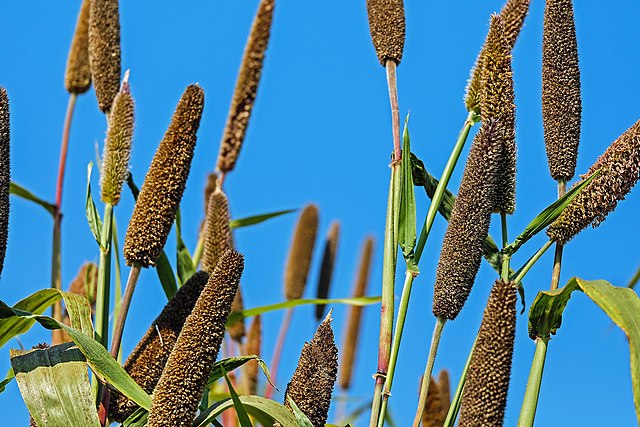A year into its trial cultivation which began in mid-2023, Guyana’s millet production is now classified “surplus” for domestic utility.
The government achieved this target through the Tacama Mega Farm whose 1,300 acres under millet strand a natural watershed.
Plans to expand the above acreage to new areas are already underway, per a Guyana Chronicle report of June 16, 2024.
Key expansion regions for millet production include Regions 5, 9 and 10. Region 5 or Mahaica-Berbice is on the Atlantic while Region 9 or Upper Takutu-Upper Essequibo is near Brazil’s border. Region 10 or Upper Demerara-Berbice, on the other hand, lies along a rich agricultural area with three major rivers.
The Upper Demerara-Berbice region accounted for the 2024 surplus because it houses the large public project at Tacama.
Guyana’s Millet Production Timeline
The impressive output in Region 10 is rather miraculous given that Guyana has no history of large-scale millet farming.
In May 2023, the country’s Ministry of Agriculture introduced small, medium and large-scale cultivation of the grain through trial phases.
UPL, an Ag company from India, carried out the production trials under a bilateral agreement between India and the Caribbean nation.
In the initial phase, UPL prepared 200 acres of land for the farming of the cereal in this new environment.
Trial cultivation continued through 2023 and by January 2024, Guyana was on course to 100% self-sufficiency in millet.
Two months later in March 2024, Tacama Mega Farm along Berbice River recorded its first major millet harvest. According to the Minister of Agriculture, Zulfikar Mustapha, all 1,300 acres yielded 1 tonne per acre.
Reclaiming the Place of Millet
Though it is a relatively new crop locally, the once-important world grain has captured the imagination in Guyana.
Millet (especially Panicum miliaceum species) was always an important food crop throughout global grain cultivation history until the mid-1950s. This is when it lost to wheat and rice which have since become the most cultivated cereals worldwide.
For Guyana, the intention is to slash perennial food imports by 25% by 2025, especially in livestock feed.
To introduce the crop to the Caribbean environment, Guyana sought expertise from India, the world’s production leader.
In short, Guyana’s millet production efforts look set to not only revamp the Old World grain but also meet domestic needs. As the following statistics show, self-sufficiency is highly relevant to a country that has always been a millet importer.
Guyana Millet Statistics
According to the World Bank, Guyana was the 93rd top importer of millet in the world in 2020 at 30,048 kg. Though this compares poorly to the imports by top importer Indonesia at 75.545 million kg, the volume was a major investment for Guyana.
What is the use of millet in Guyana?
According to the government, Guyana will use the first 2024 harvest for livestock feed as corn and soya replacement. Production and processing of feed locally will save Guyana $30 million that it uses in feed product imports each year.
Is millet a major grain in trade?
In 2023, millet was among the least traded cereals, as it represented only 3% of the global millet trade. By entering the large-scale millet cultivation scene, Guyana is joining major producing-nations like India, Nigeria, Niger and China.
